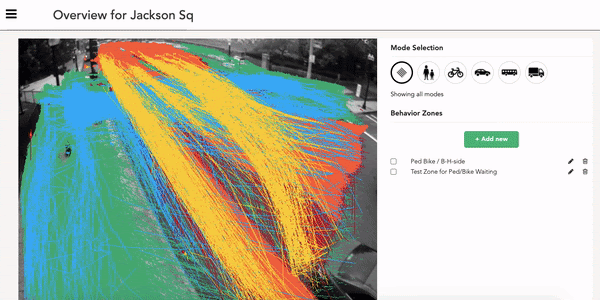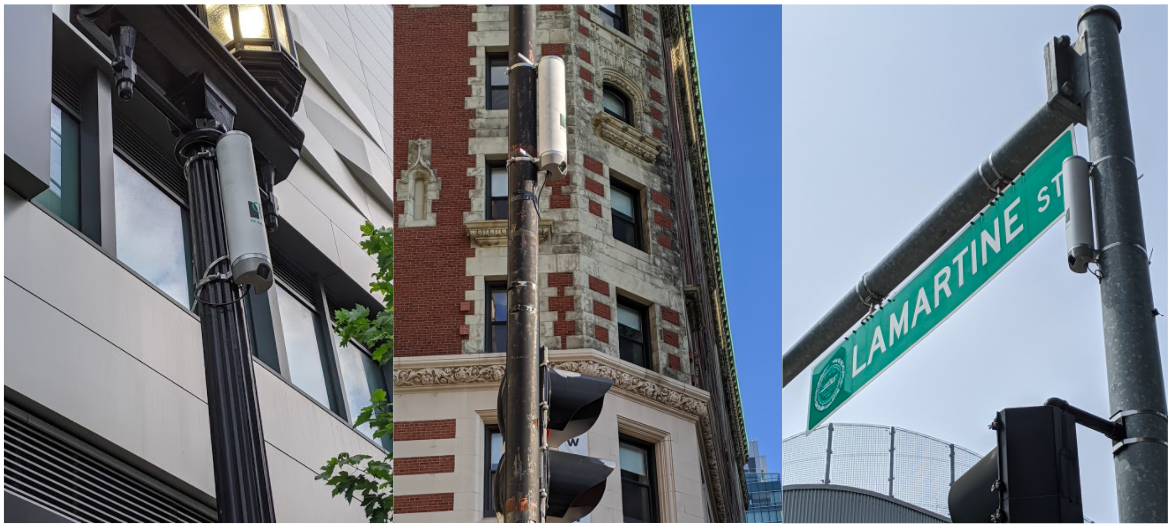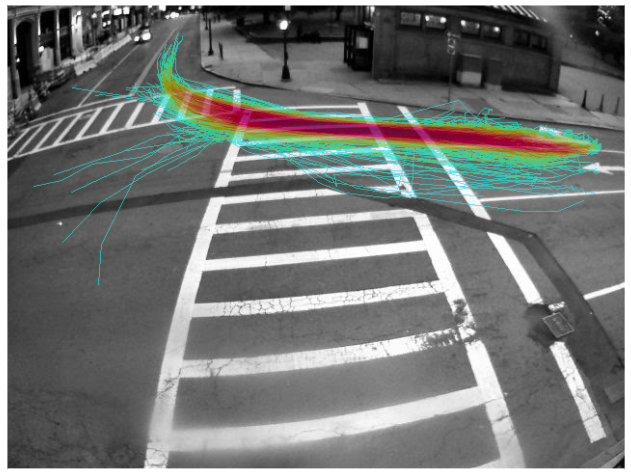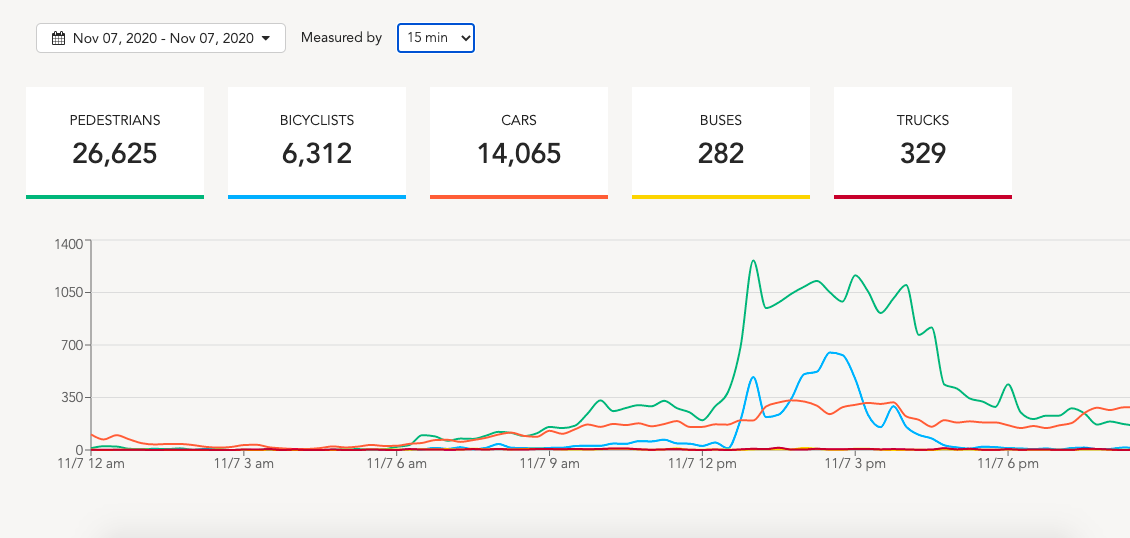Numina Street Sensors
Is there such a thing as “healthy” data collection without surveillance?
Our collaborative work with Numina was featured in 2021 at Boston Area Research Initiative Conference 2021: Building Back Smarter.
The experiment
We worked with a privacy-oriented sensor provider, Numina. We studied street-level activity using computer vision. We measured the volumes and movement patterns of pedestrians, bikes, and other traffic. We did this without collecting images, or generating a dataset that could be used to surveil residents.
Why we did this
This project began with the announcement of Boston’s Healthy Streets program. One of the primary values guiding this program was safety in the context of increasing safety for bicyclists and pedestrians. This begged the question: What makes a street healthy for everyone, particularly in the context of technology which captures data about the public realm?
For many, surveillance technology and invasive data collection directly contributes to a decreased feeling of health and safety. One reason for this is that much of the data collected in public spaces is generated either manually or from camera footage. This can involve storing visually-identifiable images of faces and license plates. We wanted to know:
- Is there such a thing as “healthy” data collection without surveillance?
- Is it possible to gather useful, usable data on street-level activity while prioritizing resident privacy?
To answer these questions, we engaged in this small-scale, collaborative research prototype. We had three goals:
- We wanted to understand the impacts of temporary street-level changes that were part of the Healthy Streets initiative.
- We would evaluate a privacy-oriented solution to data collection in the public realm that promised intelligence without surveillance.
- We planned to share new datasets openly. We wanted to make data collection more transparent and useful to the public, not just the experts.
What we learned
What we learnedCollect only what you need
- The minimum data required for most planning and operations tasks does not require collecting images. This collaboration maximized the value and impact of the tools available. We enabled more findings from a small dataset. This was in opposition to the common practice of over-collecting data from the beginning and trying to narrow it down after the fact.
- We were able to gain a remarkable level of knowledge about what was happening on our streets. This was true even though we were not capturing visual images. Our efforts questioned the need for the “eyes on the street” approach to data collection.
Transparency < Accountability
- The City Boston increasingly relies on new technologies and datasets to function and thrive. But, it must also take responsibility for promoting a shift in cultural awareness around technology, data, and related challenges.
- This project’s dataset was generated without the collection or storage of sensitive images. It will be freely available to the public for download in multiple formats and through a variety of platforms. We felt this transparency was an important first step towards greater accountability, and user agency.
Share the work
- A close partnership with Numina let us turn a minimum-viable dataset into actionable insights for planning. The Mayor's Office of New Urban Mechanics provided specific feedback to Numina. Together, we invited new questions and brainstormed new use cases for the technology.
- We used this project to address the challenge that digital data collection is largely invisible. So, we worked with a research team called Helpful Places. We developed a signage system called, DTPR: Digital Transparency in the Public Realm.
Street-level stories
We observed different stories at the three distinct locations where our sensors were installed:
- Northern Avenue in the Seaport district, a commercial street with bike lanes
- Tremont Street, downtown at a busy intersection next to the Boston Common
- And Jackson Square, where the Southwest Corridor Park convenes with a Bluebikes station and MBTA stop in Jamaica Plain





